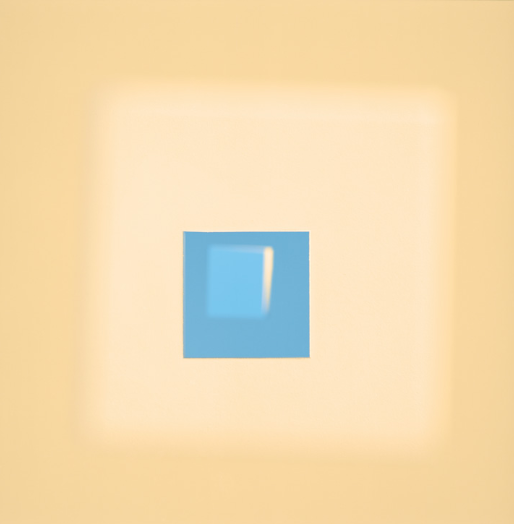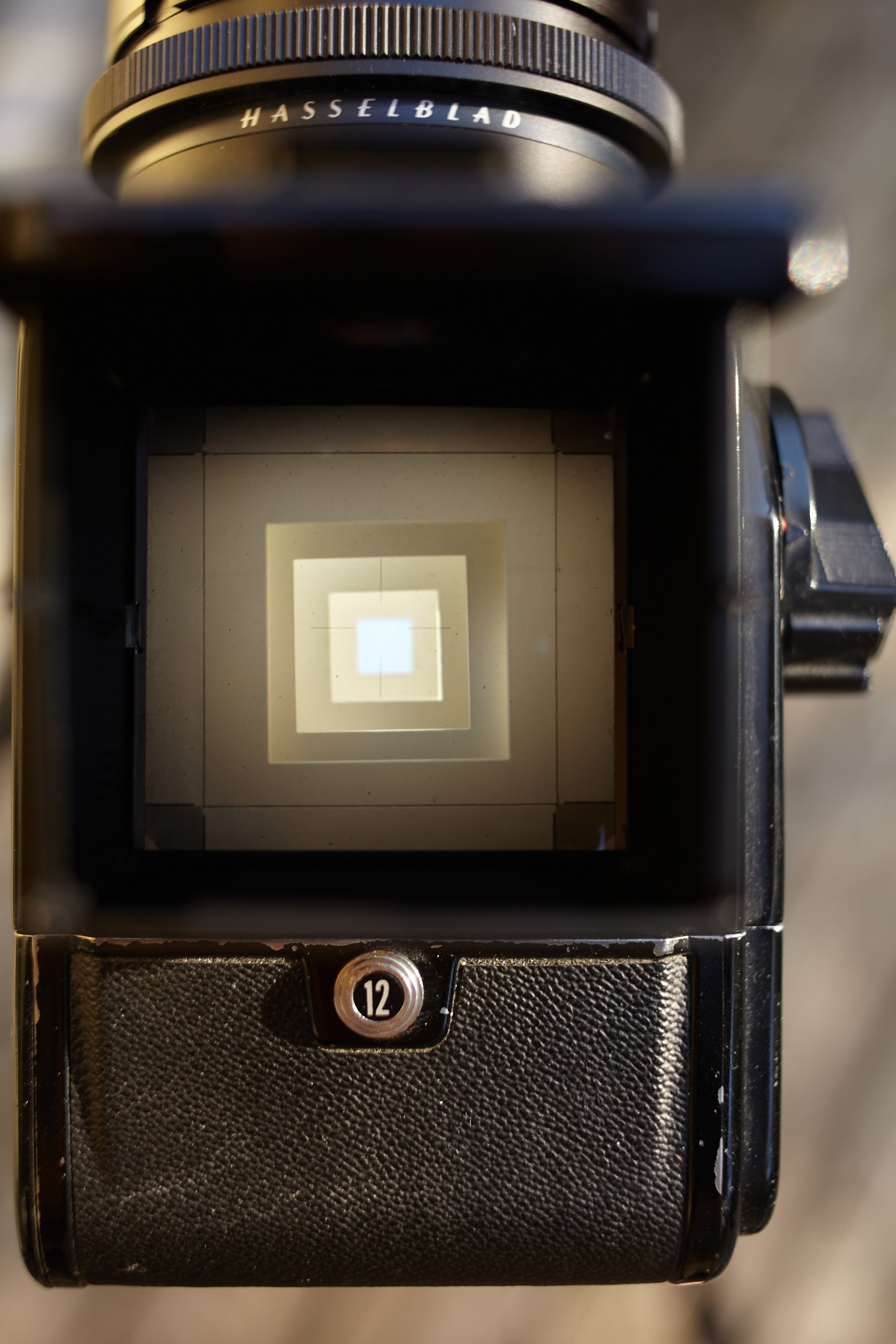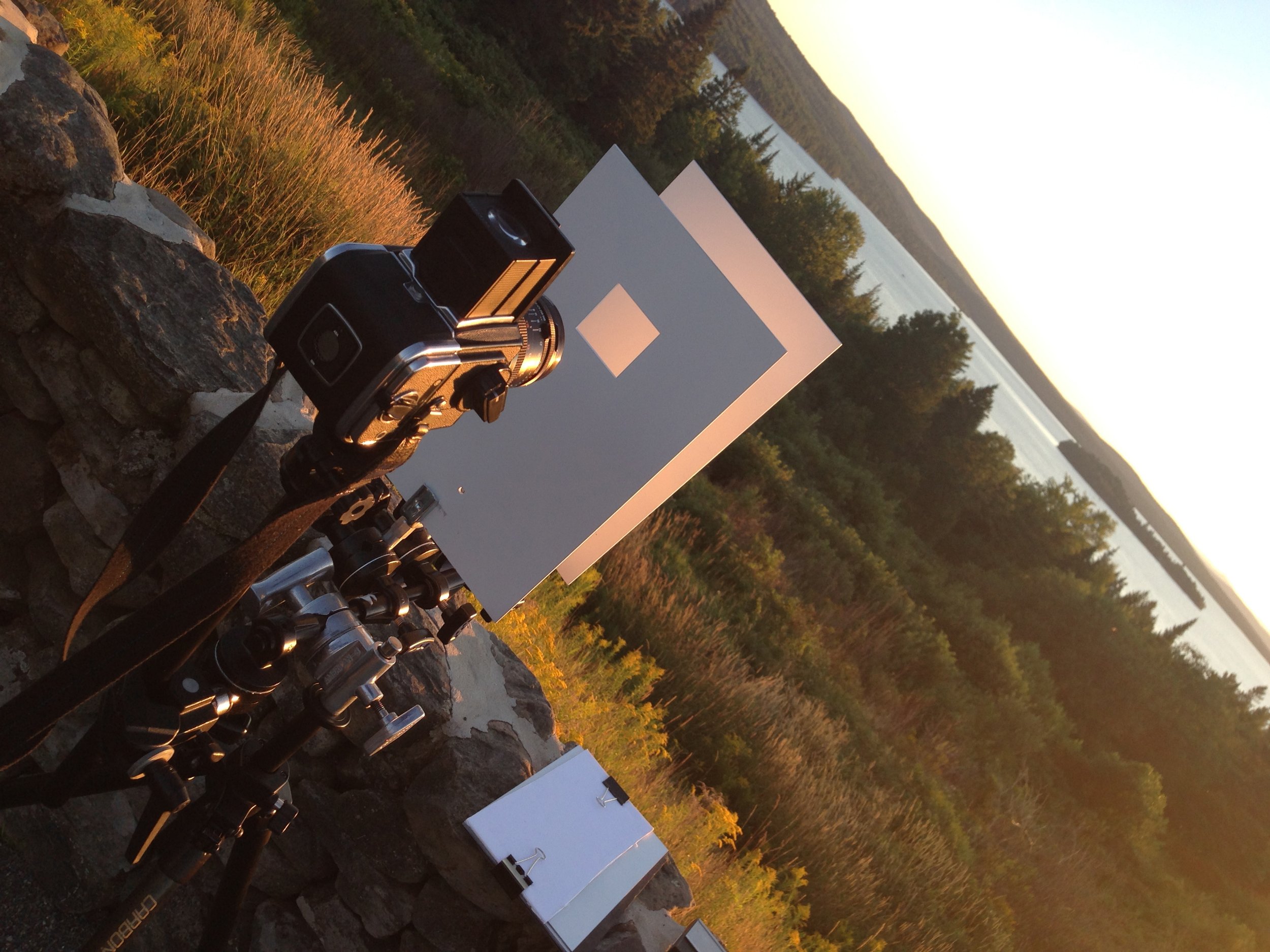Luc Demers
Ambient
I am interested in how we use photography to understand what we see, and how we see. In my current project I am creating color studies of ambient or available light. After much experimentation I have designed and created an adaptable array of white panels with square windows cut through them to gather and record light of different colors from different directions. In single exposures on color film I am capturing available light reflected on the array, arranged to juxtapose the different colors of the atmospheric light. The resulting photographs are a record of the colors of the ever changing light and an opportunity to witness the complexity and subtlety of our visual world.
— Luc Demers
On Process
JAN PIETER VAN VOORST VAN BEEST INTERVIEWS LUC DEMERS
Jan Pieter: In your previous series called “Moonlit” and “Darkened Rooms” you explored the role of darkness and absence of light in photography. The series “Ambient”, now on view in the gallery of MMPA, is an exploration of light. Can you explain the relationship between the different subjects?
Luc Demers: “Ambient” is a continuation of wanting to play with light and photography in a very direct way, to better understand how we see light and how we use photography to render the world as we see it. “Darkened Rooms” was a project that became an exploration of absence. I like to make and look at images that take a moment to get oriented and understand what you are looking at. Entering a dark room is like that. With less information we tend to fill in the blanks the best we can. We also look more intently at the details that are provided. That was true in the making of those images. I looked very closely as to how the light in the images was behaving, pale blue and green casts on window sills reflected from the sky and green lawn outside the window with the shade drawn for example. A dark room is a camera, after all.
While working on the darkened room images for a number of years I began studying the use of optics and photography in how we understand our world and universe. There is poetry in how the light travels through space and arrives on earth allowing us to observe it. The light we see from stars other than our sun has been traveling for years, decades, centuries, millennia, etc. The night sky is in a way a photograph. The light we see is the stars as they were in the past. At some point I began to think about moonlight and how it streams through the window or glows on the sill. That light glowing there on the sill traveled to the moon, reflected off its dusty surface, and traveled through our atmosphere to arrive at my window. Initially I was collecting this weary light In “Moonlit” to see if I could. After much trial and error I was able to get usable images on color negative film. What surprised me was how almost all of the color information was blue.
Moonlight does not look blue to our eyes when we look at it. Typically there is not much color we can see in such dim light. The rods in our eyes are much more sensitive to light and take over when there is not enough light for our cones. Rods differentiate light and dark but cannot differentiate color. If it is a full moon and we are outside, yes, we can see colors and yes we can use this light to recreate a scene to look like it would in daylight on film or with a digital camera through color correction. But what I saw on the film after scanning was that there were vast amounts of blue light recorded, much less green, and almost no red. I decided to keep the images with their very blue cast. The film revealed an image that was different from the experience of looking at the same scene with my eyes, revealing something that I could not perceive without the recorded image, enhancing my experience of viewing through a deeper understanding of moonlight.
We understand the world around us in large part through seeing. Understanding how we see, and how our eyes work with our brain to create an image in our mind is important. There are limitations to the visual world. We only see a very small fraction of light yet what we do with that little bit of information is exciting. Photography mimics how we see the world. We have cameras that can see other wavelengths of light that we use for scientific exploration, medicine, surveillance, etc., but the cameras we use most often mimic the way we perceive the world. I wanted to use photography to explore how we see what we see by trying to find a way to photograph just the light. In “Ambient” I am using photography to explore the visual light of a location, pulling that light out of the context of a scene. I am finding light in a sunset, sunrise, near water, a field, roof top, etc., and collecting that light on a set of white panels that reflect light from different directions. Light from the sun is a different color than light bouncing off of the sky, grass, or a building. I am trying to create compositions that are rendering the color of a location without photographing the location.
Jan Pieter: Looking at abstract work I always see some work that is constructed, other work is found. In the “Ambient” work I notice a distinct scientific approach, yet I find a lot of poetry in these images as well. Can you talk about the combination of the scientific elements and the artistic elements in these images?
Luc Demers: All photographs are abstractions. How abstract depends on the viewer and whether they can read the subject matter in the image. Do you know what the subject is, can you judge the scale of the source material, is there another context that can inform the viewer? As you reduce the amount of information in compositions, these cues can become less obvious or completely obscured, making the photograph more abstract. My intention is not to make photographs that are abstract, rather I am seeking ways of rendering and juxtaposing colors of available light in a given location at a given time in a photograph. I am making the compositions as minimal as I can, resulting in very abstract photographs. The photographs are created by arranging white panels in front of the camera so that they reflect light from different angles resulting in different colors. To a viewer this may not be obvious, but I hope that the images are interesting enough for the viewer to want to learn how they are made and the images become more interesting. I want to expand peoples’ understanding of how they see the light and color around them.
The “science” is the visible light. I am not discovering anything here, rather I am playing with well-known principles of light, color theory, physiology, and perception. Photography has been developed to render the world similar to how we see it, recording and reproducing the small portion of the electromagnetic spectrum that we can see. I like the idea of these images as poems. They are succinct phrases using the vocabulary of color photography to celebrate color. I am using phrasing similar to that of Joseph Albers, some more similar than others, as a structure for examining the range and difference among the color of light bouncing all around us.
Jan Pieter: The photographic process to make the “Ambient” photographs is fascinating. Can you describe the process making these photographs?
Luc Demers: Process: How can I photograph the color of light without photographing the landscape? Though the process evolved, and continues to evolve, I soon came to the conclusion that I needed something neutral for the light to cast on. The photographs are photographs of white panels with windows cut through so that panels behind one another can be seen. The back panel has a window allowing me to include the sky as one of the colors. The most recent assembly attaches directly to my camera allowing me to hand hold the apparatus, twist around, and react to the quickly changing light and atmospheric conditions.






